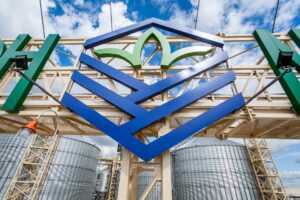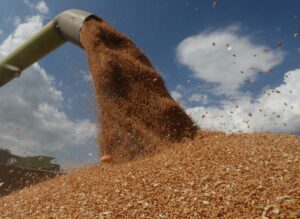Agriсultural business without its own logistics becomes unsustainable
The pricing principles of internal railway logistics in Ukraine are made impossible by the business model of agricultural production, in which the farmer does not have his own logistics means for accessing markets.
Unprofitable production and expensive and unpredictable logistics put this segment of agricultural producers in front of a choice: either buy their own vehicles or stop economic activity. This applies to 53% of Ukrainian agricultural producers – small and medium-sized farmers who specialize in the cultivation of grain crops and rely on the services of “Ukrzaliznytsia” and private wagon fleets for access to markets.
Ukrainian small and medium-sized agricultural producers, who do not have their own logistics facilities, have fallen into the so called “price scissors”. One blade is the price of products of the grain group, which has fallen on world markets to the level of the cost of production. And the second edge of these scissors is the pricing principles of logistics, where the monopoly of UZ on information and auctions regarding the rental of wagons is a factor in the unjustified rise in prices.
Agricultural producers expected that “Ukrzaliznytsia” and private wagon fleets would compete with each other for cargo, offering better conditions and a lower price. However, for the past two years, instead of competing, private park operators have only been using UZ auctions to warm up prices.
These companies are buying up the limited supply of railcars on display so that the surplus of railcars does not work like in a normal healthy economy – when the excess works to reduce. That is, the symbiosis of private business and the state railway monopoly with its imperfect planning model became a decisive factor in pricing, and not only in railway logistics.
The cost of growing grain in 2023 was $150-175/ton, and you could sell it at the port for $170-145/ton. You will transport it with your own wagons for $20/ton, plus actual costs for your wagon. And you will spend the same 20 dollars on transportation in rented wagons of UZ or private fleets, plus the same real costs for someone else’s wagon and also a sky-high profit of 100-200% for the wagon owner.
As a result, you will have additional costs of 30-80 dollars/ton, and you will be left with 100-130 dollars per ton (while you spent 150-175/ton on production). And eventually, the day will come when you stop plowing the land, because this minus from logistics against the background of world prices makes cultivation impossible.
In the end, only those agricultural producers who have their own logistics resources: wagons and cars will remain on the market. These manufacturers, which account for 47% of the market, have not been affected by the price hike, and some have even benefited. They compensated for the losses from the low price of grain with profits from expensive logistics: what was “taken out of their pocket” by the bad situation on the world markets, they compensated with money from the pocket that was formed by expensive logistics. Those who do not have this “second pocket” now do not have the resources to apply enough fertilizers, to sow, that is, to continue economic activity.
The most difficult situation is for producers in the northern regions, which are the furthest from seaports and western borders, because for them the cost of logistics is simply sky-high. Let me remind you that even at the beginning of 2021, the use of rented wagons in transportation was fully integrated into the business model of agricultural production: it is better to rent someone else’s than to spend a lot of money on the purchase and maintenance of one’s own wagons.
But already in the fall of 2021 (thanks to artificially limited access to state-owned wagons and Ukrzaliznytsia auctions), the rental price sometimes rose to 5% of the cost of a new wagon. Many agricultural producers thought about it and decided that it would be better to spend money on buying their own wagons or cars. After all, at this level of prices, they will pay off in 1-2 years, not 10.
Therefore, in 2022-23, despite the surplus, there were record investments in the purchase of own grain wagons and freight vehicles. Agricultural producers who have not yet done so, but have access to cheap credit money or donor aid, are now in negotiations to purchase wagons and other logistics resources that they have overspent on renting in recent years.
That is, the prices of 2022 and 2023 are the basis for capital investments and investments in these resources. But again, this story is more about medium, not small agricultural producers. All assistance from allies, donors, and banks requires a professional approach. A farmer who does not have lawyers and financiers on staff will not write a legal justification for receiving a loan or donor aid. This category of producers will have to overspend to the last on transportation, which is supposedly regulated by the state.
But this regulation is distorted by the officials of UZ due to additional unlimited opportunities to increase the cost of wagons as an integral component of transportation. This is the same story as in towns, where people disconnected from central heating, and for those subscribers who could not disconnect, tariffs “soared to the sky”.





